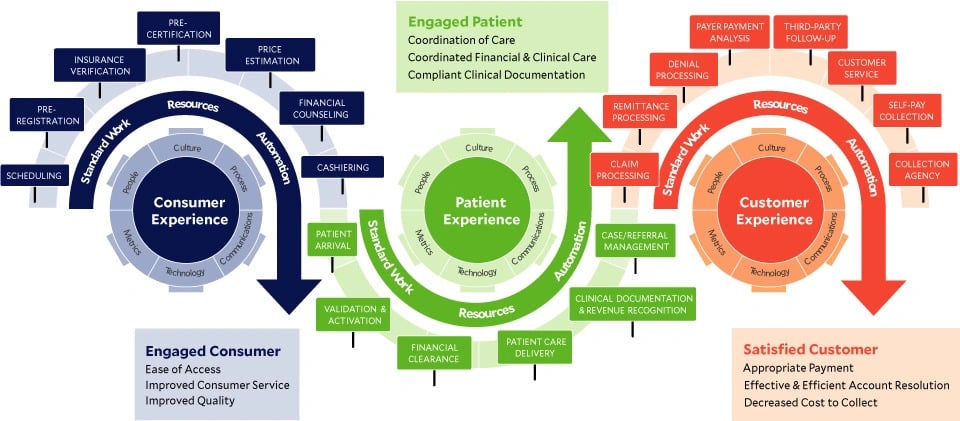Revenue Cycle Benchmarking & Denial Metrics
The healthcare revenue cycle is as critical as it is complex. To remain profitable, healthcare providers, including hospitals, health systems, and physician practices, must submit accurate claims to receive full reimbursement. A growing area of concern for healthcare organizations is medical claim denials.
What is a medical claim denial?
A denied claim results when a claim is processed by a payer and a negative determination is made. Growing denials result in lost revenue and can also lead to decreased patient satisfaction.
There are actions healthcare organizations can take to prevent denials, which is why hospitals and health systems need to understand, monitor, and course correct when it comes to denial management. For organizations to address the primary risks and causes of denials, they need data and metrics that allow them to identify opportunities and areas of concern.
Standardizing Denial Metrics – A Summary of HFMA’s Report
HFMA issued a report Standardizing Denial Metrics for Revenue Cycle Benchmarking and Process Improvement, which identified the following areas as opportunities for benchmarking and process improvement. HFMA considers these areas the key performance indicators for claim integrity.
Initial Denials as a Percentage of Volume and Charges – Claim Level
Why monitor: This metric provides trend rates of occurrence for volume and dollars. It highlights the potential process, system, or data issues.
Primary Denials
Why Monitor: This metric provides the specific, detailed rate of denials for primary claims highlighting potential process, system, or data issues.
Denial Write-Offs as a Percentage of Net Patient Service Revenue
Why Monitor: This metric is an indicator of a provider’s ability to comply with payer requirements and a payer’s ability to accurately pay the medical claim.
Time from Initial Denial to Appeal
Why Monitor: This metric measures the timeliness of the denial appeal process, which helps you understand the internal process efficiency for trending and comparison.
Time from Initial Denial to Claim Resolution
Why Monitor: This metric measures the timeliness of the claim resolution process, helping you understand internal process efficiency for trending comparison and health plan compliance with contracted appeal turnaround time(s).
Percentage of Initial Denials Overturned
Why Monitor: This metric measures the performance and trending indicator of denial appeal success, providing a deeper understanding of denial appeal efficiency and effectiveness. It also identifies potential issues with specific plans or types of denials.

Source: Standardizing denial metrics for revenue cycle benchmarking and process improvement
Conclusion
It’s critical that there is consistency in measurement and reporting. Establishing baseline data of these metrics and monitoring them closely can help you on your path to improved claim integrity. HFMA states that standardizing these metrics is a first step toward solving the industry-wide problem of denials. Once data are gathered, the next step will be to analyze, collaborate and improve performance across healthcare.
If your organization is seeking support with denial recovery and prevention, AGS Health can help. With more than a decade of experience in working with leading healthcare organizations across the country, our suite of end-to-end denial management solutions have helped customers reduce denial volumes by more than 50%, preventing as much as $13,500,000 in denials within just 8 months. Contact an AGS representative today to calculate how much you can save.
AGS Health
Author
AGS Health is more than a revenue cycle management company—we’re a strategic partner for growth. Our distinctive methodology blends award-winning services with intelligent automation and high-touch customer support to deliver peak end-to-end revenue cycle performance and an empowering patient financial experience.
We employ a team of 12,000 highly trained and college-educated RCM experts who directly support more than 150 customers spanning a variety of care settings and specialties, including nearly 50% of the 20 most prominent U.S. hospitals and 40% of the nation’s 10 largest health systems. Our thoughtfully crafted RCM solutions deliver measurable revenue growth and retention, enabling customers to achieve the revenue to realize their vision.



